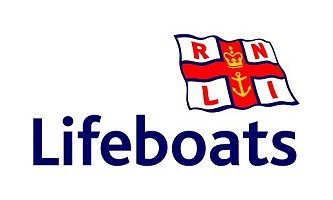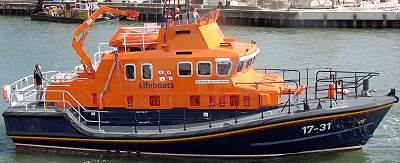Special Days Every Month
Celebrate and learn about special days
every day of the year!
 |
|
On 30 January 1790, the first purpose built lifeboat was launched on the River Tyne. Appropriately called "the Original", the boat was in service for over 40 years saving hundreds of lives. The first lifeboat was built by Henry (Francis) Greathead in 1989 Link What is the RNLI? The Royal National Lifeboat Institution (RNLI) is a charity that saves lives at sea around the coasts of the British Isles, as well as inshore. It was founded on 4 March 1824 as the National Institution for the Preservation of Life from Shipwreck, adopting the present name in 1854. What does the RNLI do? The RNLI provides a 24-hour lifeboat search and rescue service around the coasts of the UK and RoI, as well as a seasonal lifeguard service on many of the busiest beaches in England and Wales.
Lifeboats and Lifeguards do not get paid for risking their lives for you! Our volunteer crews and lifeguards put their own lives on the line to save others, providing a 24/7 search and rescue service around the UK and ROI, as well as safeguarding beaches. Who are the volunteers? These volunteers come from all walks of life, doing this vital lifesaving work on top of their day jobs. Join in and raise Funds for the RNLI See what you can do to join in and do something to support the RNLI this SOS day.
Also on this day……. 1649 – King Charles I of England was beheaded after being charged with high treason against the people of England. The execution of Charles, lead to an eleven year gap when England was a republic. Why was Charles I executed? Charles believed in the traditional principle of the divine right of kings and his reign developed into a power struggle with Parliament (representing the people). The result was the English Civil War (1642-48) – a war about who should rule the country. Should it be a king or parliament. The English Civil War (1642 – 51) The war began in 1642 when, after seeing his rights as king slashed by Parliament, Charles miscalculated by swarming into the Palace of Westminster with several hundred soldiers to arrest five Members of Parliament and a peer he accused of treason. They all escaped, but London was scandalized and the king was forced to flee the city. The war between the Roundheads (supporters of parliament) and the Cavaliers (supporters of the King) began. The Civil War led to the trial and execution of Charles I, the exile of his son Charles II, and the replacement of the English monarchy with first the Commonwealth of England (1649–1653) and then with a Protectorate (1653–1659), under the personal rule of Oliver Cromwell, the Lord Protector. England became a Republic for eleven years from 1649 – 1660. At first England was ruled by Parliament, but in 1653, Oliver Cromwell, commander of the army, became Lord Protector of England. He held his post until his death in 1658 (when his son briefly took over). Cromwell did not want to be king and refused the crown when it was offered to him. The Commonwealth – declared 19 May 1649
Links
|
See Teaching Resources for today’s date
Back to Facts of the Day Calendar
Jan | Feb | Mar | Apr | May | Jun | Jul | Aug | Sept | Oct | Nov | Dec
 © Copyright – please read © Copyright – please read All the materials on these pages are free for homework and classroom use only. You may not redistribute, sell or place the content of this page on any other website or blog without written permission from the . projectbritain.com | primaryhomeworkhelp.co.uk |
© Copyright 2013
is the creator of the Woodlands Resources section of the Woodlands Junior website.
The two websites projectbritain.com and primaryhomeworkhelp.co.uk
are the new homes for the Woodlands Resources.
left Woodlands in 2003 to work in Kent schools as an ICT Consulatant.
She now teaches computers at The Granville School and St. John’s Primary School in Sevenoaks Kent.
Woodlands Junior Homework Help new website
born on this day what happened on this day famous birthdays interesting facts did you know Interesting Calendar Facts.






